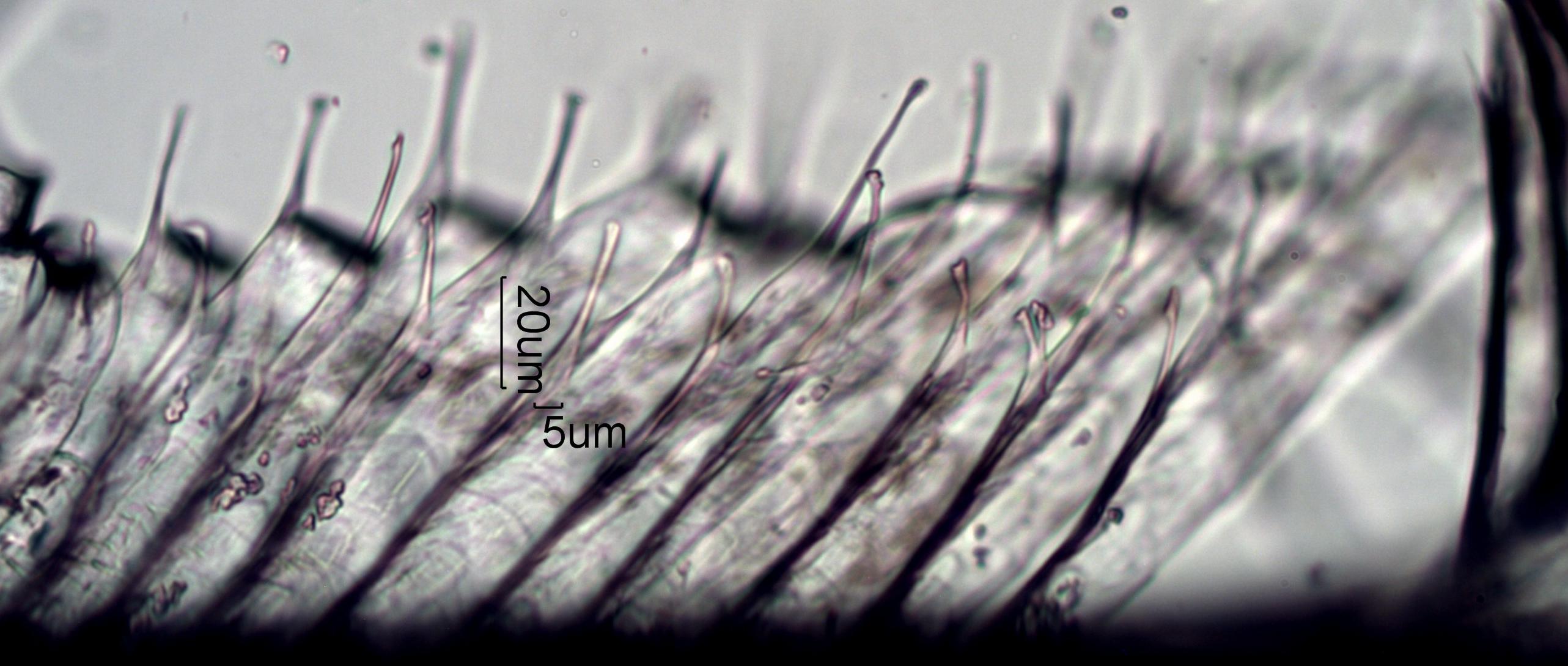Varied Thrush (Turdidae) Feather Barbule
This shows the knobbed villi characteristic of the Varied Thrush and many songbirds. The dark line at the bottom of the photograph is the rachilla of the vanule carrying the barbules. These are the base cells of the barbule. Note that there are multiple villi on each barbule.
Transmitted Off Circular Polarized Light Illumination
Click here for more information about the Varied Thrush.
Definition/Function:
KINGDOM: Animalia PHYLUM: Chordata CLASS: Aves ORDER: Passeriformes FAMILILY: Turdidae GENUS: Ixoreus SPECIES: naeviusThe Varied Thrush (Ixoreus naevius) is one of the "Songbirds". Its distinctive orange plumage on its neck, breast, wing bars, and back and the black bar around its neck make it easy to distinguish from its cousin the Robin (Turdus migratorius). The range of the Varied Thrush tends to be in the dense conifer forest of western North America from California to Alaska.
Significance in the Environment:
Characteristic Features:
The base cell of the barbule of the Varied Thrush contains knobbed villi, characteristic of many songbirds. Villi are often seen on the base cell of barbules from hummingbirds, songbirds, some shorebirds, and woodpeckers. Pigment is concentrated in the nodes but generally extends down the barbule from the node and may extend the full distance between nodes. The expanded nodes are triangular to spined and begin near the base of the barbule. The distal nodes tend to be more triangular.Associated Particles:
References:
Dove, Carla J. and Sandra L. Koch, "Microscopy of feathers: a practical guide for forensic feather identification", THE MICROSCOPE, vol. 59, no. 2, pp. 51-71, 2011Click here for more information about the Varied Thrush.


